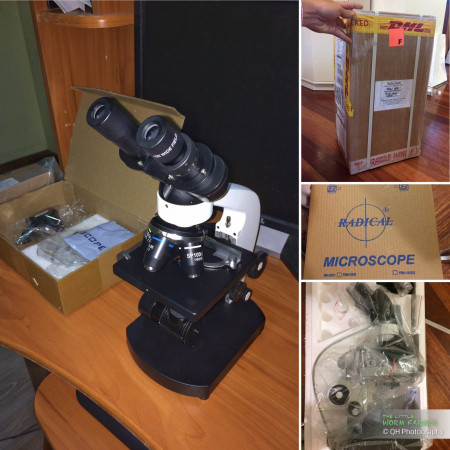Sooner or later an avid worm farmer and gardener will be interested in making a liquid fertiliser off the vermicompost created by the worms. Most beginners will be using the worm tea/wee which is actually the leachate from the worm bin. The leachate contains good stuffs but also potentially bad stuffs due to the presence of non composted material and the possibility of anaerobic condition especially when the liquid has been sitting for days in the collection tray. Anaerobic condition is to be avoided in a garden which is why we try to aerate the soil with worms and stir away from compacted soil. But how could one make sure it's leachate is safe?

As the worm farmer skills advance and he/she wants to go further in the adventure he/she will probably start getting interested in compost tea, aerated compost tea and actively aerated compost tea. Actively aerated compost tea (AACT) being the ideal process. When making compost tea you extract nutrients and microorganisms from the compost or vermicompost and you then attempt to multiply the microorganisms by aerating the tea (stir it from time to time) or actively aerate it (continuously aerate it by the mean of an pump). The value of vermicompost is not so much in the nutrient it holds but in the diversity of microorganisms present. Making an aerated compost tea allows one to exponentially increase the population of microorganisms: fungi, bacteria, Protozoa and nematodes. Some will even attempt to tilt the balance of microorganisms towards a certain type, a fungal dominated tea for example. How can you verify success?
Unless you have access to a lab it will probably be impossible to verify success and safety of the product except from using it and see the results.
There is a way which everyone can do (relatively cheaply) is by using a microscope. I was a bit daunted at the beginning, it's gardening and worm farming after all not science. But science can come to help and learning how to use a microscope is not hard and identifying microorganisms is actually quite fun and could be done with kids. Sure enough you won't be able to see any nasty chemicals etc... and you won't probably be able to ID pathogens unless you know what you are doing but with minimum research/study you should be able to ID most organisms from the four categories above and confirm if you are getting what you were planning or confirm whether or not your worm tea is anaerobic.
Last time I used a scope was back in high school... long time ago... but I decided to jump in and went and buy an affordable scope for A$231 (discounted from $295). Usually scopes less than $300 will not be good enough. What you need is at least 400x max magnification, an ABBÉ condenser, an iris or diaphragm to control the amount of light and a good illumination system.
In the coming series of posts I will share some of my findings when analysing samples of various sources: leachate, AACT, pond water etc...
Posted
in
A day in a worm farm, Microscopy in worm farming on Nov 29, 2016
by Quoc-Huy Nguyen Dinh
